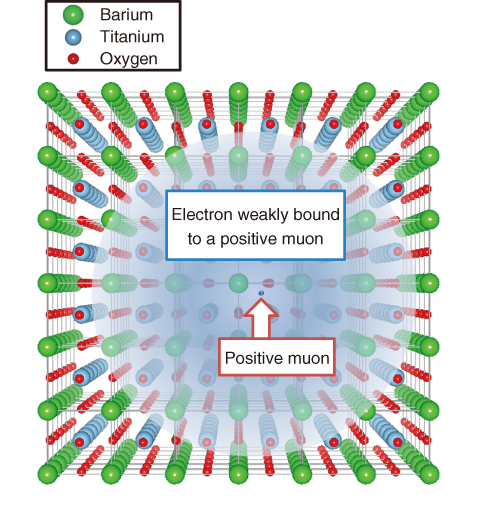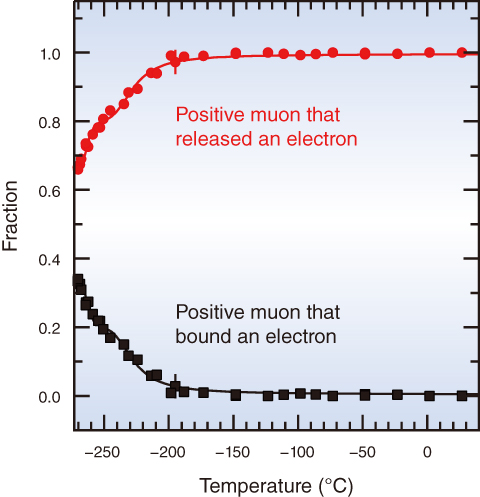
Fig.3-8 A schematic of the muon-electron bound state in BaTiO3

Fig.3-9 Electron release from the hydrogen-like muon-electron bound state in BaTiO3
Multilayer ceramic capacitors (MLCCs) are fundamental components of electronic circuits and are indispensable for state-of-the-art electronic devices. Since the performance of MLCCs heavily depends on that of dielectric materials, controlling the quality of dielectric materials is vitally important. As the internal electrodes of typical MLCCs contain an easily-oxidizable element, the annealing process to unify the dielectrics and electrodes is performed in a reducing atmosphere containing hydrogen (H). On the other hand, this process can cause insulation degradation, depending on the annealing conditions. Intensive studies are under way to identify the origin of this degradation.
In this work, we focused on the risk of H incorporation into dielectrics in the annealing process, and studied the behavior of H in a typical dielectric material, barium titanate (BaTiO3). The electronic structure of H impurities in BaTiO3 is not obvious, since H can assume various charge states in materials. To tackle this issue, we used positive muons in place of H. It is well established that the electronic structure of a muon-electron bound state is identical to that of H except for small isotope corrections. Thus, we can imitate H impurities in BaTiO3 with positive muons and selectively probe their influences. Another advantage of using a muon is its high sensitivity; one can obtain microscopic information corresponding to H impurities in the dilute limit, which is difficult to access by other experimental techniques.
A positive muon beam was irradiated to a BaTiO3 single crystal at the J-PARC muon facility, and the local electronic structure around the implanted muons was investigated by means of the muon spin rotation technique. We observed a signal from muons that weakly bound an electron below −190 ℃, which suggested that the electron orbital was widely spread, as shown in Fig.3-8. The weakly bound electrons were gradually released with increasing temperature, as shown in Fig.3-9. The released electrons could move freely around the crystal and led to electric conductivity, thus decreasing the insulating performance of BaTiO3. Hydrogen impurities in BaTiO3 are also thought to release electrons according to a similar mechanism, resulting in insulation degradation at device operating temperatures.